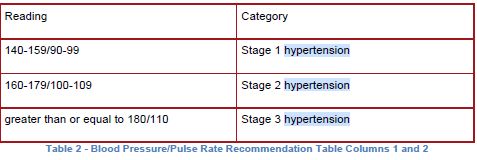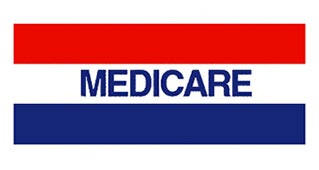DOT physical near Fredericksburg and Spotsylvania are routinely performed at Stine Chiropractic Clinic. Our team of board certified chiropractic orthopedists are both registered as a certified medical examiner. Get your dept of transportation physical in adherence to FMCSA guidelines here in Fredericksburg or Spotsylvania. Walk-in DOT physicals welcome, we get you back on the road as soon as possible. To find us on google click here. Some of the common DOT physical requirements explained.
What is a certified medical examiner
When getting a CDL physical near Fredericksburg and Spotsylvania, you should always make sure that the one performing the examination is on the national registry as a certified medical examiner. Seeing a certified medical examiner for a DOT physical, in Fredericksburg or Spotsylvania, assures that the exam is done in accordance with FMCSA guidelines. A Certified medical examiner is familiar with the FMCSA guidelines through a written examination that certifies them for the position. DOT physical cards can not be issued from someone who is not a certified medical examiner. You can check to see if your provider is a certified medical examiner, or find one here.
What should you expect for a CDL physical near Fredericksburg and Spotsylvania
A CDL physical, near Fredericksburg and Spotsylvania, begins with a self reported history from the driver indicating if any certain problems are present. Listing of medications, surgeries, and illnesses are also a part of this form. Make sure to fill this out completely and honestly in case there is a problem. If you accidentally or purposefully leave out information, your examiner will not be able to ask the questions necessary to investigate whether a problem is or is not present. This puts you and other motorists at risk of serious harm.
DOT physical requirements, health history form.
DOT physical requirements near Fredericksburg and Spotsylvania are comprehensive and include urinalysis, which checks for any indicators of systemic disease. This is not a drug test. It’s simply to check for sugar in the urine which can be an indicator of diabetes, protein which can indicate kidney disease, blood which indicates kidney or bladder disease, and specific gravity which can tell you how hydrated you are as well as kidney function.
Also included in the physical is an eye exam. This checks for any problems with the eyes like bad vision. You will need to have at least 20/40 vision in order to pass this portion. If you don’t think you have at least 20/40 vision, we recommend you seeing an eye doctor prior to your visit.
We will also check you for color blindness, a condition that happens mostly in men where the colors green and red may be difficult to see. This is necessary to check for to make sure the driver can see traffic signals. Also, make sure that if you do wear contacts or glasses, to bring them to the DOT exam near Fredericksburg and Spotsylvania. You will be allowed to use them for the exam.
In the dept of transportation physical you will also have normal vitals taken like blood pressure and weight. Other areas we will be testing is hearing, general appearance of the skin which you will have to be gowned for, peripheral vision, normal fields of gaze, ear exam, heart evaluation through listening carefully for any abnormalities, lung exam, neurological exam, and any other additional tests. Other tests may include lab work to investigate certain concerns like blood sugar etc., referral for sleep study if indicated, and possible xray.
What are the DOT physical requirements
The certified medical examiner will be checking over a lot of general health concerns. Starting with the health history intake where you will have to answer questions to the best of your ability and list any problems or medications you are currently taking. The DOT physical requirement include going over your answers with you and making sure they know the exact reasons you are on certain medications. Medications can have a lot of off-label use and this needs to be identified.
Blood pressure
Depending on whether you are taking any blood pressure medications, you will need to pass this part of the DOT physical requirements. A passing number is 140/90 in most cases. If you are taking blood pressure medications this number may change.

Different stages of hypertension and their values.
Urinalysis
The next step is urinalysis. This is where your certified medical examiner will be testing for sugar, protein, blood, and specific gravity. These will give the certified medical examiner additional information on your overall health. Paying particular attention to glucose in the urine as there should be none in a healthy individual. If glucose is positive, your certified medical examiner may decide to do a hemoglobin A1c test to check your levels. This number must be below 10% in order to be considered safe to drive.
The next part of the DOT physical requirements is to perform an exam.
Integument
The certified medical examiner will gown you to make sure that the integumentary system is visible for any problems that the driver may not be able to see.
Eyes
The certified medical examiner will then check your eyes. In order to meet DOT physical requirements, you need to pass the eye exam with at least 20/40 vision in both eyes. Make sure to bring glasses or contacts that you are prescribed as these are permitted to be worn during examination. Not to worry here if you are unable to pass you will be directed to an eye doctor for renewed prescription and then allowed to re-test. Part of the DOT physical requirements are the ability to see color, as this is important in order to identify traffic signals. You will also be tested for peripheral vision. You will need to see a minimum of 70 degrees in either periphery. Cardinal fields will be checked as well for any spasms of the eye called nystagmus.
Ears
The ears will be assessed with an otoscope. The requirement here is that you certified medical examiner MUST be able to see the tympanic membrane or eardrum. The most common problem here is too much ear wax or cerumen. They will also test you via a forced whisper test. This is where the certified medical examiner will force whisper a phrase at 5 feet or more and have you repeat it back to them. If you wear hearing aids, do not forget to bring them and have them turned on for this step.
Mouth
Another area the certified medical examiner checks for the DOT physical requirements is the oral cavity for any concerning diseases.
Musculoskeletal/neurological
The certified medical examiner at this point checks your body’s range of motion. Specifically the ranges of motion necessary to carry out the job of a commercial motor vehicle driver. They will also check all reflexes and certain balance tests to screen for any problems.
Heart
This will be checked with a stethoscope by your certified medical examiner as the listen for any abnormalities like murmur. They should check one area on the right side of the chest and 4 spots on the left chest.
Lungs
With the stethoscope the certified medical examiner listens to you breathe. This is where they check for any wheezing rales or crackling which would indicate lung disease or fluid buildup. They may also ask you to say certain phrases to further evaluate for mass or fluid buildup while listening to your chest.
Abdomen
Next you will be checked for any abdominal abnormalities by first listening to the stomach for any delayed or absent bowel sounds, and abnormal heart or vessel sounds. The certified medical examiner will also look for any hernias whether they be umbilical (belly button) or inguinal (groin). They will then feel around the abdomen for any hard or abnormal masses in the area. They will also pay close attention to the amount of discomfort you may feel while they examine the area that could indicate disease.
What should you bring to your DOT exam near Fredericksburg and Spotsylvania to meet DOT physical requirements
- As mentioned above you will need your glasses or contacts for the eye exam.
- Other things that would be useful is any lab work done recently like A1C levels if you have diabetes.
- If you have had a recent surgery, make sure to bring a release letter from your surgeon stating that you are cleared for duty.
- If you had, have sleep apnea, or have or had a sleep test done, bring in your results so that your provider can review them.
- If you have sleep apnea make sure to bring in you annual study as well as CPAP compliance data. If you have any questions on what any of these are, don’t hesitate to call us.
- If you are on any medications make sure you know what they are, and what they are for so that you can easily tell your medical examiner.
- This is necessary because some medications have off-label uses that are prohibited for commercial driving unless they are used for a certain condition only and not that off-label use.
- If you have recently started medication for any condition, a good rule of thumb is to get the prescribing physician to send a letter with you stating that the medication is being tolerated well and that the condition is stabilized or controlled.
What common problems do examiners see during dept of transportation physical when trying to meet DOT physical requirements
- By far the most trouble drivers have is high blood pressure. Its always best to have the blood pressure below 140/90 with or without medication. Not to worry if this happens we retake the blood pressure and if it is still high a 3 month certificate can be given within reason. This is done to give you time to take care of the blood pressure naturally, or with medication.
- Forgetting to bring glasses or contacts to the physical. If this happens we still perform the exam and have you come back as soon as you can with the glasses to finish the exam and get your card.
- Glucose in the urine. This is not very common but it is a part of the physical that screens for diabetes. If you have glucose in the urine, that means that your glucose levels are above 180 mg/dl. This is the level at which it starts to be excreted through the urine.
- Cerumen impaction. This is simple earwax that builds up in the ear that can keep the examiner from fully visualizing the tympanic membrane or eardrum. It may also affect your hearing. Make sure the ears are clean prior to your exam to make sure this doesn’t happen. Avoid pushing anything into the ear to clean them.
How often do you need a DOT physical near Fredericksburg and Spotsylvania
A DOT physical, in Fredericksburg or Spotsylvania is typically done either once every 2 years or once every year depending on current conditions. Conditions such as sleep apnea, high blood pressure, diabetes, and other conditions are only certified for one year. A DOT physical near Fredericksburg and Spotsylvania can be certified for the maximum of 2 years. This means that a completely healthy driver will have to be certified every two years.
What should you be aware of when getting a dept of transportation physical
To meet DOT physical requirements, make sure that if you have any conditions that may need additional time to get a letter, such as diabetes, change in medication, new treatment for cancer etc. Give yourself 45 days prior to your current card expiration date to get the physical done. This allows the medical examiner to tell you what you will need to pass as far as documentation. If you show up with the 45 days left on your current card, it gives your medical examiner the ability to put your case into a determination pending. This means that you a deemed safe to drive for up to 45 days until you get the examiner the paperwork necessary to make the determination. You can only operate during this 45 day determination period if you have those days left on your current card.
For instance if your card expires the next day and are expecting to get a new card the day of your appointment, but the examiner needs more paperwork to pass you, and the paperwork takes longer than that day to acquire, you will fail. Make sure to give yourself enough time for things like this. It only creates frustration for both examiner and driver when deadlines need to be met. Stine Chiropractic Clinic recommends that when getting a dept of transportation physical, that you make it a habit of always doing so 45 days prior to expiration.
You never know when getting a dept of transportation physical might need additional workups that take time. Do yourself and examiner a favor and give yourself time so that you and the examiner can keep you on the road with the additional 45 days if needed, and avoid losing a medical card.
Even if you fail and lose a card this does not mean you cant get a new one once you fix the problem. You will just need another full physical which has additional cost and you lose some time on the road.
What happens if I fail when getting a dept of transportation physical
Failing a dept of transportation physical is not always a big deal. Most cases a failed dept of transportation physical can be passed as soon as the condition is corrected and treatment is effective. The main thing is remain calm and talk to your examiner about what has to be done in order to pass the next time. Take the plan of action seriously and start taking action as soon as possible on the plan so that you minimize the amount of time spent without a DOT physical near Fredericksburg and Spotsylvania.
If you need a DOT physical near Fredericksburg and Spotsylvania don’t hesitate to give us a call today. Same day appointments may be available. Contact Stine Chiropractic Clinic today at 540 898-4100.







